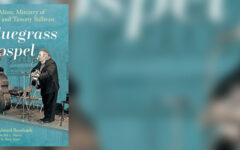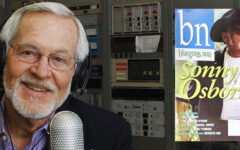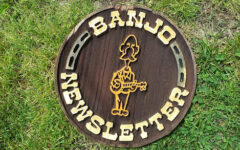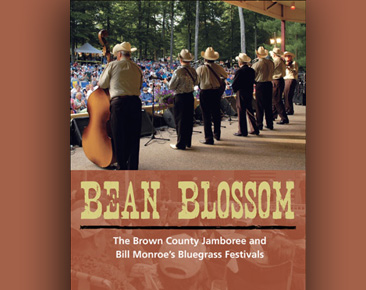
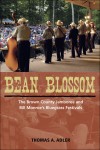 Tom Adler, author of Bean Blossom, last year’s University of Illinois Press history of Bill Monroe’s bluegrass festivals and the Brown County Jamboree, is featured in a new Q&A on the U of I web site.
Tom Adler, author of Bean Blossom, last year’s University of Illinois Press history of Bill Monroe’s bluegrass festivals and the Brown County Jamboree, is featured in a new Q&A on the U of I web site.
The subject of the interview is – you guessed it – the upcoming 2012 Bill Monroe Memorial Bean Blossom Bluegrass festival, scheduled to begin on June 9 in Indiana. This event holds a special place in bluegrass history, as it was founded and run for many years by Monroe himself. Adler talks about the festival’s long history of more than 40 years, and his own experience attending a majority of them.
Here’s a taste…
Q: How has the festival changed since its inception?
Adler: Both the festival and its music-park site have changed enormously, evolving constantly through the 45 years of Bill Monroe’s ownership of the venerable music park. The festival and site changed even more after Monroe’s death in 1996 and through several years of his son James’s stewardship, and then underwent further physical transformations and revitalizations after the park was bought in 1998 by Dwight
Dillman, a former Blue Grass Boy who wanted to keep the festival traditions going.The festival’s fan base grew tremendously in the early 1970s, and soon included pickers from England, Japan, New Zealand, Canada, and several more European nations. The fans who returned yearly felt a keen sense of loss in 1982, when Bill’s brother Birch Monroe (who had overseen the three-season Brown County Jamboree Sunday shows for thirty years) died; and of course, the sense of loss was even greater after Bill’s own death. But even before Monroe’s passing, the old Brown County Jamboree Barn, built by the park’s first operators during World War II, had been razed in 1986, and the “old” outdoor stage built by Monroe and his Blue Grass Boys in 1968 for the 2nd June festival was replaced with the much-larger present stage in 1992. That same year Bill moved his own Museum and Bluegrass Hall of Fame from Nashville, Tennessee to Bean Blossom, constructing a new building to house it. That year Bill also brought the few remaining logs from the Rosine, Kentucky cabin where he had lived in the 1920s with his greatest musical influencer, his fiddling maternal uncle, Pendleton Vandiver, and then re-erected “Uncle Pen’s Cabin” next to the museum. In the Dillman era, the campground parts of the park were vastly improved with RV park facilities, better restrooms, and new signage throughout the park that both defined the roads and camping areas and commemorated local, regional, and national icons of the music.
Despite numerous physical changes to the park, and the loss of key figures like Bill
and Birch, the original spirit of the June festival endures: fans arrive, set up their tents or park their RVs, and visit with old friends who have become part of a recurrent “superfamily” of Bean Blossom fans and pickers. Jam sessions break out all through the campgrounds and parking-lots, and — fickle summertime Indiana weather permitting — go on through all hours of the day and night for the festival’s duration. And each June festival now features many more professional artists and groups than in the early years.
The full interview is available online.
You can read our review of Bean Blossom – The Brown County Jamboree and Bill Monroe’s Bluegrass Festivals here at Bluegrass Today.

